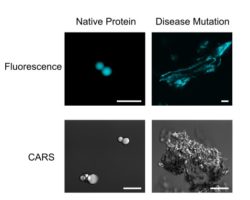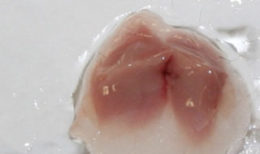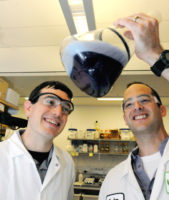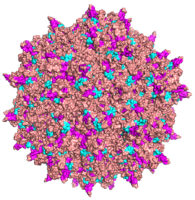Posts Tagged ‘research’
Size matters
Macrophages are the body’s immune attack force, but how do they recognize their target particles? Fletcher Lab investigators have shown how macrophage target recognition is controlled by the height of the antibody above the target cell surface. They found that the gap created between the target cell and macrophage by the antibody, which bridges an antigen on the target cell surface and the macrophage’s receptors, must be small enough to exclude a molecule that turns off the receptor. This has broad implications for development of therapeutic antibodies because it establishes a size threshold for effective cell surface antigen targets.
Read MoreCRISPR-Gold editing reduces repetitive behavior in mice with a form of autism
New research from Prof Niren Murthy’s lab uses his CRISPR-Gold nanoparticle delivery technique to lessen some autism symptoms in mice with a form of fragile X syndrome, the most common known single-gene cause of autism spectrum disorder. Published in Nature Biomedical Engineering June 25, 2018.
Read MoreLiving Large: Exploration of Diverse Bacteria Signals Big Advance for Gene Function Prediction
Professor Adam Arkin co-authors the largest functional genomics study of bacteria ever published. He and collaborators have developed a workflow that enables large-scale, genome-wide assays of gene importance across many conditions.
Read MoreBioE alumni on different continents win grant to to see molecular structure of membraneless organelles
Bioengineering PhD alumni Nick Fawzi and Sapun Parekh started a conversation about something completely different and ended up with a grant from the Human Frontier Science Program to study membraneless organelles.
Read MorePutting microfluidics in other people’s hands
Professor Amy Herr and her lab are highlighted in this Nature Methods Technology Feature, exploring new ways to for researchers to share designs, devices and experience.
Read MoreBrown fat flexes its muscle to burn energy and calories
Professors Sanjay Kumar and Kevin Healy, in collaboration with Professor of Nutritional Sciences and Toxicology Andreas Stahl, have discovered that the same kind of fat cells that help newborn babies regulate their body temperature could be a target for weight-loss drugs in adults.
Read MoreWhat good is CRISPR if it can’t get where it needs to go?
BioE startup GenEdit is featured in Wired as the first company devoted solely to Crispr delivery.
Read MoreDueber lab moves closer to clean, green indigo dyes
Professor John Dueber’s lab has advanced two steps closer to cleaning up the dirty production of indigo dyes. Using synthetic biology they have done away with the wasteful chemical synthesis of indigo, and removed the damaging bleaching stage that converts indigo to leucoindigo.
Read MoreFirst step toward CRISPR cure of Lou Gehrig’s disease
Researchers led by Professor David Schaffer have for the first time used CRISPR-Cas9 gene editing to disable a defective gene that causes amyotrophic lateral sclerosis, or Lou Gehrig’s disease, in mice, extending their lifespan by 25 percent.
Read More









